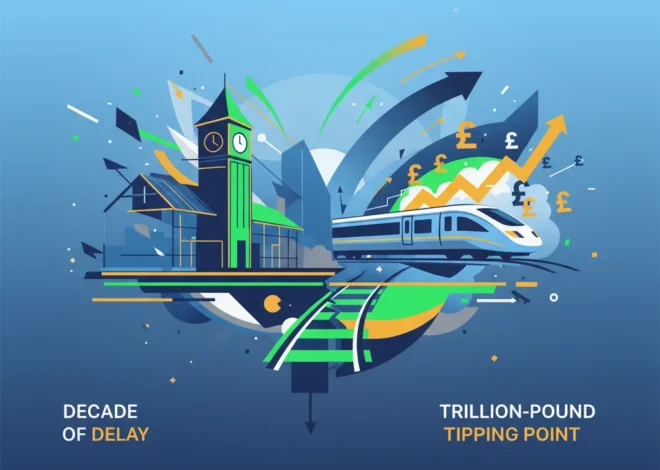
Rethinking UK Taxation: Could a 25% Flat Tax Unleash Britain’s Economy?
The UK’s tax system is a labyrinth. A sprawling, complex beast of codes, reliefs, and allowances that has grown over centuries, it is often a source of frustration for individuals, a burden for businesses, and a headache for policymakers. Every year, chancellors tinker at the edges, adding a new clause here or adjusting a threshold there, but the fundamental complexity remains. In this dense forest of fiscal policy, a recent letter to the Financial Times by John Wosner offered a deceptively simple, yet profoundly radical, solution: tear it all down and start again with a single flat tax.
Wosner’s proposal, laid out in just a few sentences, is bold: “a flat tax of, say, 25 per cent on all income, whether from earnings, dividends, rent, capital gains or inheritance. The first £20,000 would be exempt… All other reliefs would be abolished.” He argues that its “simplicity and fairness would be a great stimulus to the economy.”
Is this the silver bullet the UK has been waiting for, or a reckless gamble with public finances and social equity? This idea, while provocative, forces us to ask fundamental questions about what we want from our tax system: is it a tool for social engineering, a mechanism for redistribution, or simply the most efficient way to fund the state? In this deep dive, we will unpack the flat tax proposal, weigh its economic arguments, and explore whether this radical simplification could truly fix Britain’s tax system.
The Current Quagmire: Why Does the UK Tax System Need Fixing?
Before dissecting the solution, it’s essential to understand the problem. The UK’s current tax code is notoriously convoluted. The complete tax legislation is estimated to run over 10 million words, a length that has ballooned in recent decades. A 2022 report from the National Audit Office highlighted the immense administrative costs and complexities involved in the system, noting that “HMRC’s administration of the tax system is unwieldy and costly” (source).
This complexity manifests in several ways:
- Multiple Taxes on Income: An individual’s earnings are subject to both Income Tax and National Insurance Contributions (NICs), each with its own thresholds and rates, creating bizarre marginal tax rates for some earners.
- Disparate Treatment of Income Sources: Income from employment is taxed differently from dividend income, which is taxed differently from capital gains on investments. This creates economic distortions, encouraging individuals and companies to structure their affairs to minimise tax rather than to maximise economic productivity.
- A Forest of Reliefs and Allowances: From pension contributions and Individual Savings Accounts (ISAs) to specific venture capital schemes, the system is riddled with reliefs designed to incentivise certain behaviours. While well-intentioned, they add layers of complexity and are often disproportionately utilised by wealthier, better-advised individuals.
The result is a system that is expensive to administer, difficult for ordinary people to understand, and arguably inefficient in its primary goal of raising revenue for public services. It is this backdrop of deep-seated complexity that makes the siren song of a simple flat tax so appealing.
Deconstructing the Cloud: The Physical Risks Behind Our Digital Finance
Anatomy of the 25% Flat Tax Proposal
John Wosner’s proposal can be broken down into three core pillars: a single rate, a universal allowance, and the abolition of all reliefs. Let’s examine how this would work in practice compared to the current system for different types of income.
Below is a simplified comparison of how different income scenarios might be treated under the current system versus the proposed flat tax model. Note that current rates are for England, Wales, and Northern Ireland for the 2023/24 tax year and do not include the complexities of National Insurance.
| Income Scenario | Current System (Simplified) | Proposed Flat Tax System |
|---|---|---|
| £40,000 Salary | £12,570 Personal Allowance (0%). Remainder taxed at 20%. Approx. Tax: £5,486. | £20,000 Allowance (0%). Remainder (£20k) taxed at 25%. Tax: £5,000. |
| £80,000 Salary | £12,570 (0%), next £37,700 (20%), remainder (40%). Approx. Tax: £17,432. | £20,000 (0%). Remainder (£60k) taxed at 25%. Tax: £15,000. |
| £30,000 in Capital Gains | £6,000 allowance (0%). For a higher-rate taxpayer, remainder (£24k) taxed at 20% or 28%. Tax: £4,800-£6,720. | £20,000 allowance (if no other income). Remainder (£10k) taxed at 25%. Tax: £2,500. |
| £50,000 in Dividends | £1,000 allowance (0%). For a higher-rate taxpayer, remainder taxed at 33.75%. Tax: ~£16,537. | £20,000 allowance (if no other income). Remainder (£30k) taxed at 25%. Tax: £7,500. |
This table illustrates the profound shift the proposal represents. It would mean a tax cut for many salaried employees and a significant tax cut for those whose income is derived from **investing** and dividends. The core appeal is its uniformity: a pound is a pound, regardless of whether it was earned through labour, a successful stock market trade, or rent from a property.
The Case For: A Catalyst for Economic Dynamism?
Proponents of a flat tax argue its benefits extend far beyond mere simplicity. The primary economic case rests on three pillars:
- Incentivising Work and Investment: With a single marginal rate of 25%, the “tax wedge” on additional work is clear and, for high earners, significantly lower than the current 40% or 45% bands (plus NICs). This could encourage entrepreneurship, attract global talent, and stimulate more economic activity. Similarly, by equalising the tax on capital gains and dividends with income, it removes distortions in the **investing** landscape, potentially leading to more efficient capital allocation in the **stock market** and beyond.
- Reducing Avoidance and Evasion: A simpler system with fewer loopholes is harder to game. The billions of pounds spent annually on tax advice and structuring could be redirected to more productive uses. The clarity of the system would, in theory, improve compliance and could even boost overall tax morale.
- Boosting Transparency and Fairness: The argument for fairness here is procedural. Everyone plays by the same, simple rules. The current system, where a well-advised investor can pay a lower effective tax rate than a high-earning employee, strikes many as inherently unfair. A flat tax, by treating all income equally, addresses this particular brand of inequality.
From a Reader's Plea to a Financial Mandate: The Economics of Climate Inaction
The Case Against: A Recipe for Inequality and Fiscal Ruin?
For every argument in favour of a flat tax, there is a powerful counterargument. Critics, including respected bodies like the Institute for Fiscal Studies (IFS), have long pointed out the significant downsides.
The most potent criticism is that it is inherently regressive. While the £20,000 allowance protects the very lowest earners, those on middle incomes would see little benefit or even a tax increase (if moving from a 20% to a 25% basic rate), while the highest earners and those with significant investment income would receive a massive tax windfall. A 2022 analysis by the IFS on general tax simplification notes that “radical reforms that look appealingly simple on a whiteboard… often involve big losers as well as winners” (source), a warning that applies directly to this proposal.
The second major hurdle is fiscal sustainability. Would a 25% rate be high enough to fund the UK’s public services? Total tax receipts in the UK are projected to be over £1 trillion for the first time in 2023-24, equivalent to around 37% of GDP (source). Calculating the exact revenue from a flat tax is complex, as it depends on behavioural changes, but many analyses suggest that a rate required to be revenue-neutral would need to be higher than 25%, or that a 25% rate would lead to a significant black hole in the public finances, necessitating deep cuts to services like the NHS, education, and defence.
Finally, the economic shock of removing all reliefs, as highlighted in the Editor’s Note, could have devastating, unpredictable consequences for the housing market, pension funds, and the entire savings and **investing** culture of the UK.
Beyond the Binary: Are There Smarter Paths to Simplification?
Perhaps the true value of Wosner’s letter is not as a literal blueprint, but as a thought experiment that forces us to consider less radical but still meaningful reforms. The consensus among many experts in **economics** and public **finance** is that simplification is desperately needed. Alternative paths could include:
- Merging Income Tax and National Insurance: This is a long-standing proposal to merge the two main taxes on earnings into a single, more transparent rate.
- Aligning Tax Rates: Moving towards equalising the tax rates on capital gains, dividends, and earned income to reduce tax-motivated economic distortions.
- Systematic Pruning of Reliefs: Instead of abolishing all reliefs, a comprehensive review could eliminate those that are ineffective, overly complex, or inequitable, while retaining those with clear social or economic benefits.
The Quantum Leap: Why Today's Financial Markets Are on the Brink of a Sci-Fi Revolution
Conclusion: A Necessary Debate for a Modern Economy
The 25% flat tax proposal is, in all likelihood, a political and economic non-starter in its purest form. The transition costs would be immense, and the distributional consequences would be too dramatic for any mainstream political party to countenance. However, to dismiss it out of hand would be a mistake.
John Wosner’s letter to the FT serves as a powerful catalyst for a debate the UK must have. It challenges the incrementalism that has led to our current, unwieldy system and forces us to confront the trade-offs between simplicity, fairness, and efficiency. As the global **economy** evolves, driven by rapid changes in **financial technology** and new ways of working and **trading**, a tax system designed for a different era looks increasingly unfit for purpose. The ultimate solution may not be a flat tax, but the principles it champions—simplicity, transparency, and neutrality—should be the guiding stars for any genuine attempt at fixing Britain’s broken tax system.


